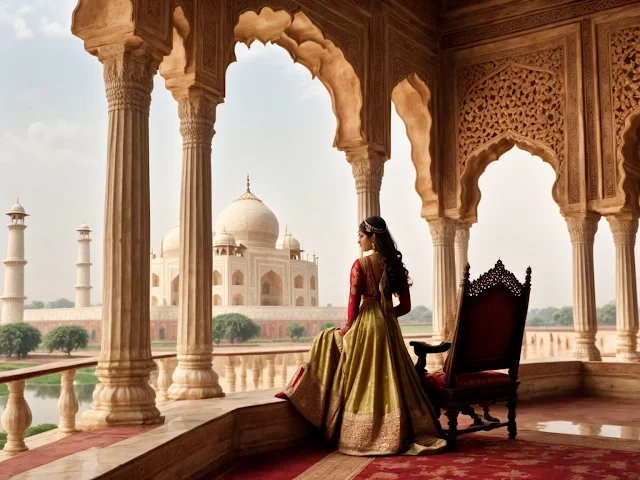The true love of SULTAN SHA JAHAN
In the heart of 17th-century India, within the opulent palaces of Agra, there existed a love story that would transcend time and be forever etched in the annals of history – the tale of Sultan Shah Jahan and his beloved Mumtaz Mahal.
Sultan Shah Jahan, a ruler of grandeur and wisdom, found his heart captivated by the ethereal beauty and grace of Mumtaz Mahal. She was not just a queen in his eyes but the very embodiment of elegance, compassion, and devotion. Their love unfolded against the backdrop of a flourishing empire, as Shah Jahan ascended to the throne.
Mumtaz Mahal, the chosen one, became the Sultan's confidante, advisor, and the mother of his children. Her presence was a soothing balm to the challenges of the kingdom, and her wisdom a guiding light for Shah Jahan's decisions. As they navigated the intricacies of rule, their love deepened with each passing day.
Amidst the splendor of the Mughal court, Shah Jahan's affection for Mumtaz blossomed like the most exquisite garden. The fragrant breezes of their private moments whispered tales of tenderness, and the moonlit nights witnessed their solemn vows of eternal love.
However, fate, ever unpredictable, cast a shadow upon their idyllic existence. Mumtaz Mahal, during the birth of their fourteenth child, faced a destiny that would challenge even the mightiest of rulers. As her life flickered, Shah Jahan stood by her side, helpless in the face of impending loss. In her final moments, Mumtaz Mahal entrusted a sacred promise to her grieving husband – to immortalize their love for all eternity.
In the wake of Mumtaz Mahal's passing, Shah Jahan was consumed by grief. He withdrew from the affairs of the kingdom, his heart aching for the presence of his beloved. In his solitude, the promise he made to Mumtaz took form – the construction of a monument that would stand as a testament to their eternal love.
The Taj Mahal, a marvel of white marble and intricate design, rose from the banks of the Yamuna River. Commissioned by Shah Jahan, it became the physical embodiment of his undying love. The gleaming domes, minarets reaching for the heavens, and the gardens mirroring paradise were conceived from the depths of Shah Jahan's sorrow and devotion.
The Taj Mahal, completed in 1653, stands today as a symbol of eternal love and architectural brilliance. The story of Sultan Shah Jahan and Mumtaz Mahal, woven into the fabric of this majestic monument, transcends time, inspiring generations with the power of true love that endures even in the face of heart-wrenching loss.


Your words are like a melody, creating a harmonious symphony of thoughts that resonate with readers.
ReplyDelete